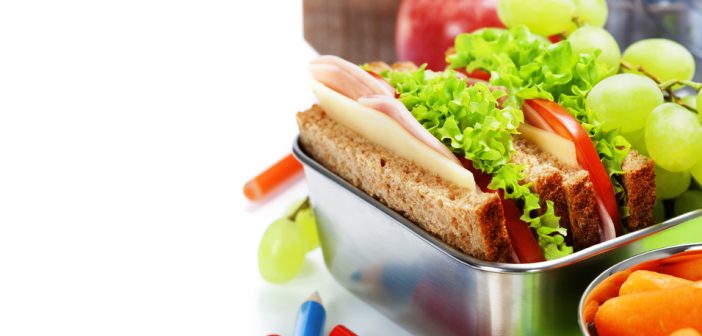When I was at school in the 80s, I’d take a ham and cheese sandwich to my Queensland school almost every day. It sat in my bag and baked for a few hours until the bell rang for lunch. By the time I ate it, it was warm, soaked with melted butter, and frankly pretty disgusting.
I have no idea how I didn’t get sick.
We know a whole lot more about food hygiene now than we did then – thank goodness. The good news is that the bacteria that causes food to spoil in the heat isn’t the same bacteria that typically causes food poisoning.
Phew!
The bacteria that causes meat, cheese, fish and milk to spoil in the heat is called Pseudomonas. It’s still not a great idea to eat it if it’s gone off, because it can get pretty unpleasant, but it usually won’t cause gastrointestinal symptoms.
But that doesn’t mean we don’t want to protect our children’s lunchboxes from bacteria – and the harmful bacteria that does cause food poisoning can still make its way into our kids’ lunches if we’re not careful.
More than four million Australians get food poisoning every year. The bacteria responsible are usually Salmonella, Campylobacter, Staphylococcus aureaus, E. coli or Listeria. All of these usually come from animal faeces and soil, and they don’t change the appearance or taste of the food, so you can’t tell it’s in there. But they can cause symptoms such as nausea, diarrhoea, vomiting, cramps and chills from about 30 minutes after being eaten.

The trouble is bacteria flourishes in the heat – temperatures between 5 and 60 degrees Celsius are known as the “danger zone”. And in summer heat, bacteria can double in as little as 20 minutes. That means a small amount of bacteria that might not cause symptoms can grow exponentially by lunchtime and cause a whole lot of problems.
But there are steps you can take to protect your kids from bacteria in their lunchboxes:
- Wash your hands thoroughly before preparing lunch (or even better, have them wash their hands thoroughly before they make their own lunch). And ensure you’re using clean utensils and cutting boards.
- Use separate cutting boards for raw meat, and fruit and vegetables.
- If you’re cooking, use a food thermometer to ensure you get it to the right temperature.
- Put perishables like meat, eggs, cheese or yoghurt in an insulated lunchbox with at least two cold sources, such as freezer packs or frozen drinks.
- Teach kids to wash their hands thoroughly before eating, using soapy water for at least 20 seconds. Or if you doubt they’ll do this, you can also pack antibacterial wipes in their lunchbox.
If your child does get sick, keeping them hydrated is the key to a quick recovery. Water isn’t enough, so ensure you’re stocked up with a rehydration solution to replace salt, sugar and water. Or you can make your own by dissolving half a teaspoon of salt and six teaspoons of sugar in one litre of clean drinking water.
If your child’s symptoms are severe, consult your GP.

